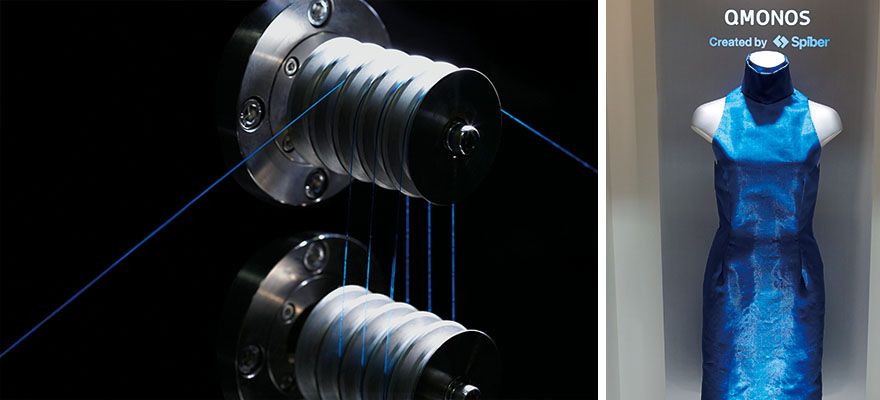Home > Highlighting JAPAN >Highlighting Japan January 2014>Science & Technology
Highlighting JAPAN
Science & Technology
Spiber Inc.
Artificial spider silk swings into the future

In November 2013, Spiber Inc. of Tsuruoka City, Yamagata prefecture, was presented with the Yamagata Innovation Award for its development of technology enabling the mass production of artificial spider silk fiber. Spiber became the first company in the world to industrialize a process that had previously been deemed impossible to adapt to mass production. We spoke to Kazuhide Sekiyama, president and CEO of Spiber, to learn the story behind the company's success.
Sekiyama's interest in spider silk dawned at a party following a fireworks festival in the summer of 2004. A senior at Keio University, he was engaged in research at the Institute for Advanced Biosciences, and as the party wore on Sekiyama and his fellow students got excited over the question of which insect was the strongest. While one student suggested a hornet, another countered a spider would be stronger, as a spider can capture and prey upon a hornet. This led them to question the secret to the strength of spider silk.
"Our discussion continued until about 4 o'clock in the morning," Sekiyama recalls. "We went to the university right after that, looking for documents on spider silk. We began our research to answer the question of why spider silk, which is so strong and flexible, has not been put to practical use in the same way as regular silk."
Spider silk is made of the same protein that forms the body hair of other animals. Yet there are more than 30,000 species of spider in the world, and a single spider will use more than seven different kinds of silk. The number of variations was so vast that it became nearly impossible for the group to define what constituted spider silk at all. Shifting their attention to the protein from which spider silk is produced, the researchers aimed instead to produce silk with a protein that had the same strength as the silk from a spider.
Spiders' carnivorous nature makes them difficult to raise and breed. Sekiyama's team opted instead to add spider genes to microorganisms with much simpler biological structures. This became the key to producing artificial spider silk. Industrializing the process required equalizing the strength and thickness of the silk produced, and the group was able to modify their microorganisms to give them the control they needed.
"Microorganisms have a simple body structure, giving them a high energy efficiency that allows them to double in number in about 30 minutes," Sekiyama explains. "So in 30 minutes we can turn one trillion microorganisms into two trillion, and one ton into two tons."
The group's research progressed more smoothly, and using their modified microorganisms, they achieved a stable production process for a fiber that was extremely similar to spider silk. "Our research picked up speed once we focused attention on the protein from which spider silk is made," Sekiyama recalls.
Through this process, the group succeeded in producing a fiber that is petroleum free and environmentally friendly. Combining the words 'spider' and 'fiber,' they established the company Spiber, where further research is now in progress. Spiber's silk is being developed for use with automobile manufacturers and transport equipment makers, while in the medical field – since the silk is made of protein – research is underway toward the development of artificial blood vessels and other applications. In the future, the uses of artificial spider silk are expected to expand into an even greater variety of fields, bringing improvement in productivity and functionality along with reduced cost.
"The possibilities are limitless," Sekiyama says looking to the future. "Spider silk is just one of the ways in which we're working to realize our company vision. From here, we aim to continue our research and develop even more effective technologies that will contribute to society."
© 2009 Cabinet Office, Government of Japan






